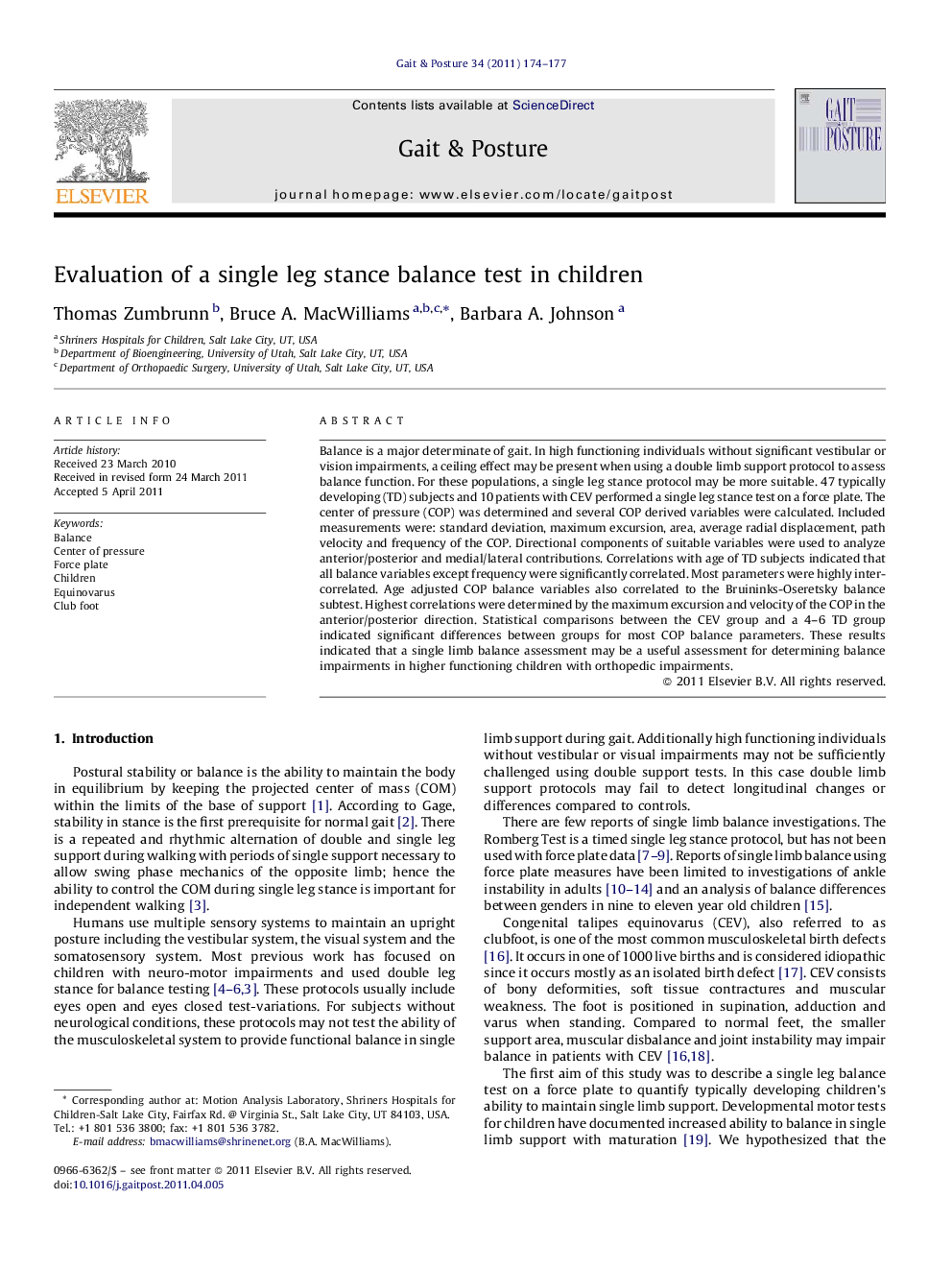| Article ID | Journal | Published Year | Pages | File Type |
|---|---|---|---|---|
| 4056888 | Gait & Posture | 2011 | 4 Pages |
Balance is a major determinate of gait. In high functioning individuals without significant vestibular or vision impairments, a ceiling effect may be present when using a double limb support protocol to assess balance function. For these populations, a single leg stance protocol may be more suitable. 47 typically developing (TD) subjects and 10 patients with CEV performed a single leg stance test on a force plate. The center of pressure (COP) was determined and several COP derived variables were calculated. Included measurements were: standard deviation, maximum excursion, area, average radial displacement, path velocity and frequency of the COP. Directional components of suitable variables were used to analyze anterior/posterior and medial/lateral contributions. Correlations with age of TD subjects indicated that all balance variables except frequency were significantly correlated. Most parameters were highly inter-correlated. Age adjusted COP balance variables also correlated to the Bruininks-Oseretsky balance subtest. Highest correlations were determined by the maximum excursion and velocity of the COP in the anterior/posterior direction. Statistical comparisons between the CEV group and a 4–6 TD group indicated significant differences between groups for most COP balance parameters. These results indicated that a single limb balance assessment may be a useful assessment for determining balance impairments in higher functioning children with orthopedic impairments.
